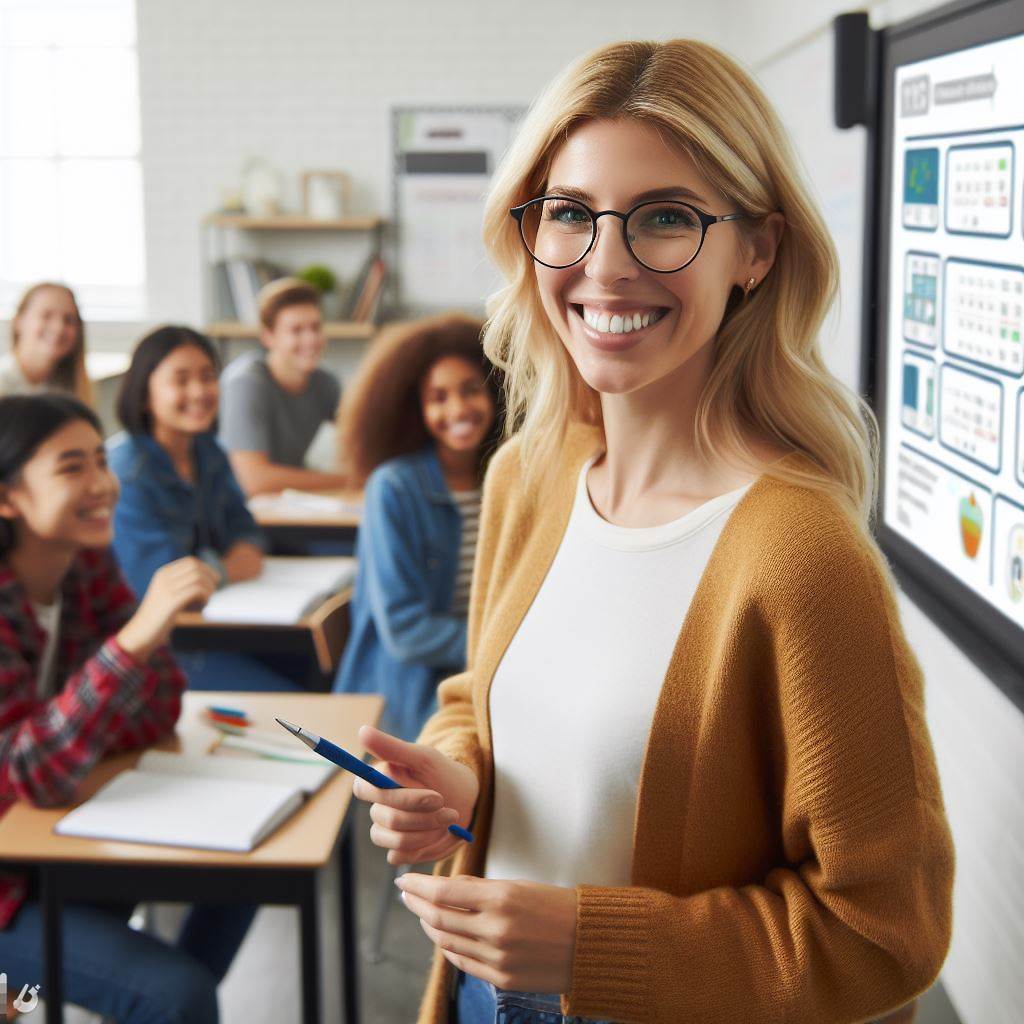Understanding Adult Learning Theories
Importance of Adult Learning Theories
Understanding adult learning theories is crucial for effective corporate training.
These theories help trainers tailor their methods to adult learners.
Adult learners bring experiences that influence their approach to learning.
Therefore, trainers must recognize these unique characteristics.
Key Adult Learning Theories
There are several key theories to consider.
Andragogy focuses on self-directed learning.
Experiential Learning emphasizes learning through experience.
Constructivism highlights the importance of social interaction in learning.
Understanding these theories enhances training effectiveness.
Applying Learning Theories in Corporate Training
Trainers can apply these theories in various ways.
For example, they can create self-directed learning paths.
Additionally, they can incorporate real-life scenarios into training sessions.
By encouraging group discussions, trainers foster a collaborative environment.
This approach enhances retention and application of knowledge.
Challenges in Implementing Learning Theories
Trainers may face challenges when applying these theories.
One common challenge is addressing diverse learning styles.
Another challenge involves managing differing levels of experience.
Trainers must adapt their methods to accommodate these differences.
Continuous professional development helps trainers overcome these challenges.
The Role of Feedback in Learning
Feedback plays a critical role in adult learning.
Constructive feedback guides learners and reinforces understanding.
Moreover, it encourages learners to reflect on their performance.
Trainers should create a culture of open feedback within training sessions.
This practice boosts engagement and helps learners achieve their goals.
Effective Communication Skills for Trainers
The Importance of Clarity
Clarity is essential for effective training.
Unlock Your Career Potential
Visualize a clear path to success with our tailored Career Consulting service. Personalized insights in just 1-3 days.
Get StartedTrainers must convey complex information simply.
Participants benefit when concepts are easy to understand.
Avoid jargon that may confuse your audience.
Active Listening Techniques
Active listening encourages participant engagement.
Trainers should demonstrate genuine interest in feedback.
This practice fosters an open communication environment.
By repeating key points, trainers show they value contributions.
Nonverbal Communication
Body language greatly influences interaction quality.
Maintain eye contact to create a personal connection.
Gestures can emphasize important points effectively.
Facial expressions should match the tone of the presentation.
Feedback Delivery
Providing constructive feedback is vital for growth.
Deliver feedback in a supportive and respectful manner.
Timing feedback appropriately enhances its effectiveness.
Encourage dialogue to clarify any misunderstandings.
Adapting Communication Styles
Trainers must adapt their communication styles to their audience.
Recognize different learning styles within the group.
Modify approaches based on participant responses and needs.
This flexibility fosters a more inclusive training environment.
Engaging Storytelling
Telling stories can make lessons more relatable.
Use personal anecdotes to illustrate key points.
Stories help retain attention and enhance learning retention.
Maintain a narrative that aligns with training objectives.
Mastering Presentation and Facilitation Techniques
Understanding Audience Needs
Every trainer must understand their audience’s needs and learning styles.
This knowledge allows for tailored content delivery.
Engaging the audience begins with effective needs assessment.
Observing their reactions during training can provide valuable insights.
Effective Communication Skills
Trainers should master verbal and non-verbal communication.
Clear articulation of ideas enhances audience understanding.
Body language plays a vital role in engagement and connection.
Additionally, active listening fosters a supportive learning environment.
Presentation Design Proficiency
Creating visually appealing presentations keeps participants interested.
Utilizing a consistent design theme throughout is essential.
Information should be organized logically to facilitate learning.
Incorporating multimedia elements can enhance the overall experience.
Facilitation Techniques
Effective facilitation encourages collaboration and participation.
Using open-ended questions stimulates discussion among participants.
Group activities promote teamwork and practical application of concepts.
Follow-up discussions help reinforce learning and clarify misunderstandings.
Time Management Skills
Managing time effectively during a training session is crucial.
Trainers must create a balanced schedule to cover all content.
Sticking to allocated time keeps the audience engaged.
Flexibility is important in case discussions run over time.
Feedback and Adaptability
Continuous feedback from participants is vital for improvement.
Trainers should encourage participants to share their thoughts openly.
Adapting to feedback can enhance future training sessions.
Being receptive to change demonstrates commitment to participant success.
Discover More: Balancing Creativity and Standards in Curriculum Development
Developing Engaging Training Materials and Resources
Understanding the Audience
Identifying your audience is crucial for effective training.
Consider their backgrounds, preferences, and learning styles.
This understanding helps tailor your materials to their needs.
Utilizing Multimedia Resources
Incorporating multimedia can enhance engagement and retention.
Use videos, infographics, and interactive elements in your presentations.
These tools break up monotony and make learning enjoyable.
Creating Visually Appealing Materials
Effective materials should have a clear layout and design.
Choose colors and fonts that are professional and readable.
Visuals should support the content, not overwhelm it.
Incorporating Real-Life Examples
Use case studies and scenarios to illustrate key points.
These examples make concepts relatable and practical.
Participants can better apply what they’ve learned in real situations.
Encouraging Active Participation
Interactive activities engage learners and enhance understanding.
Use discussions, group work, and hands-on exercises.
These methods foster a collaborative learning environment.
Continuous Feedback and Improvement
Gather feedback on your training materials from participants.
This information is invaluable for making enhancements.
Regular updates ensure that your materials remain relevant.
Uncover the Details: Top Qualities of an Effective Youth Program Facilitator
Assessment and Feedback Methods for Evaluating Learning
Importance of Assessment
Effective assessment identifies learner progress and understanding.
It informs trainers about areas needing improvement.
Regular assessments keep the training aligned with learning objectives.
Types of Assessment Methods
Both formative and summative assessments play crucial roles.
Formative assessments occur throughout the training process.
These methods include quizzes, polls, and discussions.
Summative assessments evaluate learner knowledge at the end.
Examples include final exams and project presentations.
Incorporating Feedback Loops
Feedback is essential for learner growth.
It provides insights and encourages continuous improvement.
Trainers should encourage open feedback during sessions.
Apply feedback to adapt training content and methodologies.
Utilizing Technology for Assessments
Technology enhances assessment efficiency and effectiveness.
Online platforms offer diverse assessment tools.
Interactive quizzes engage learners and provide instant results.
Analytics can track learner progress over time.
Creating a Supportive Environment
A supportive atmosphere fosters honest feedback.
Encourage learners to reflect on their experiences.
Create a culture where mistakes are learning opportunities.
This boosts confidence and promotes deeper learning.
Discover More: The Importance of Play in Early Childhood Education Programs

Adaptability and Flexibility in Training Approaches
The Importance of Adaptability
Adaptability is crucial for corporate trainers in today’s dynamic environment.
Trainers face diverse groups of learners with varying needs and learning styles.
By being adaptable, trainers can tailor their methods to suit these individual preferences.
This flexibility enhances engagement and improves retention of information.
Different Training Styles
Different training styles exist to accommodate various learning preferences.
Visual learners benefit from charts and videos.
Auditory learners excel with discussions and lectures.
Kinesthetic learners require hands-on activities to grasp concepts.
Understanding these styles helps trainers provide effective instruction.
Coping with Change
Change is inevitable in the corporate landscape.
Trainers must quickly adapt content and methodologies to keep pace.
For instance, new technologies may alter how training is delivered.
Being proactive in learning these tools is essential for success.
Fostering a Positive Learning Environment
A positive learning environment fosters learner engagement.
Trainers should create a space where participants feel comfortable sharing ideas.
Methods such as group discussions and collaborative projects can help achieve this.
Moreover, trainers should encourage feedback throughout the learning process.
Continuous Professional Development
Trainers should engage in continuous professional development.
Attending workshops and conferences expands knowledge and skills.
Networking with peers can offer new perspectives and techniques.
Embracing lifelong learning models adaptability in practice.
Find Out More: The Growing Demand for Instructional Designers in Canada
Building Rapport and Trust with Trainees
Understanding the Importance of Rapport
Building rapport is crucial for effective training.
It creates a safe space for open communication.
Trust enhances the learning experience for trainees.
Effective Communication Techniques
Active listening fosters trust between trainers and trainees.
Make eye contact to show engagement during sessions.
Use open body language to invite participation.
Incorporate trainees’ names in discussions to personalize interactions.
Establishing Common Ground
Find shared interests with your trainees.
This helps to create a connection that eases tension.
Incorporate relevant examples from their experiences.
Building common ground encourages participation and loyalty.
Demonstrating Empathy and Understanding
Show empathy by acknowledging trainees’ feelings and concerns.
Be patient when addressing questions and doubts.
Understanding diverse backgrounds fosters a positive environment.
Encourage trainees to express their thoughts without fear.
Creating a Supportive Learning Environment
Promote collaboration among trainees through group activities.
Encourage sharing of personal experiences during training.
Establish ground rules to ensure respectful interactions.
A supportive environment enhances trust and rapport.
Leveraging Technology and E-Learning Tools for Training
Embracing Digital Platforms
Corporate trainers must embrace digital platforms for effective learning experiences.
These platforms include a variety of e-learning tools and resources.
Choosing the right platform can significantly enhance engagement and retention.
For example, platforms like Zoom and Microsoft Teams facilitate real-time interaction.
Additionally, tools like Articulate 360 enable the creation of interactive courses.
Utilizing Learning Management Systems
Learning Management Systems (LMS) streamline the training process.
They allow trainers to upload materials and track progress efficiently.
Many organizations use LMS such as Moodle or TalentLMS for comprehensive training needs.
This technology provides analytics to measure training effectiveness.
Moreover, it offers customization options to tailor content to specific audiences.
Incorporating Multimedia Elements
Multimedia elements enhance the learning experience significantly.
Incorporating videos, podcasts, and infographics caters to various learning styles.
These elements make training more engaging and relatable for participants.
Using storytelling techniques can also effectively convey complex concepts.
Furthermore, interactive quizzes reinforce learning and provide immediate feedback.
Encouraging Collaborative Learning
Technology facilitates collaborative learning opportunities among participants.
Online forums and discussion boards allow learners to share ideas and resources.
Group projects can be conducted effectively through cloud-based collaboration tools.
This method fosters teamwork and enhances communication skills.
Moreover, peer feedback increases the depth of learning and understanding.
Measuring Training Outcomes
Measuring training effectiveness is crucial for continuous improvement.
Utilizing analytics from LMS can provide insights into learner progress.
Feedback surveys also help to gauge participant satisfaction and knowledge gain.
Analyzing this data allows trainers to refine their methods and materials.
Consequently, this leads to more impactful training sessions in the future.
Additional Resources
What skills do you need to succeed in environmental careers? | ECO …
5 Steps to Creating Effective Training Programs | Explorance




